Climate change globally perturbs water circulation thereby influencing ecosystems together with cultivated land. Both dangerous and useful species of bugs are prone to be susceptible to such adjustments in local weather. As small animals with a disadvantageous floor space to physique mass ratio, they face a danger of desiccation. A quantity of behavioural, physiological and genetic methods are deployed to unravel these issues throughout adaptation in varied Drosophila species. Over 100 desiccation-related genes have been recognized in laboratory and wild populations of the cosmopolitan fruit fly Drosophila melanogaster and its sister species in large-scale and single-gene approaches.
These genes are concerned in water sensing and homeostasis, and barrier formation and performance through the manufacturing and composition of floor lipids and through pigmentation. Interestingly, the genetic technique applied in a given inhabitants seems to be unpredictable. In half, this can be as a consequence of completely different experimental approaches in completely different research. The noticed variability might also replicate a wealthy standing genetic variation in Drosophila permitting a quasi-random selection of response methods by soft-sweep occasions, though additional research are wanted to unravel any underlying ideas.
These findings underline that D. melanogaster is a sturdy species properly tailored to withstand local weather change-related desiccation. The wealthy knowledge obtained in Drosophila analysis present a framework to handle and perceive desiccation resistance in different bugs. Through the applying of highly effective genetic instruments in the mannequin organism D. melanogaster, the capabilities of desiccation-related genes revealed by correlative research might be examined and the underlying molecular mechanisms of desiccation tolerance understood. The mixture of the wealth of obtainable knowledge and its genetic accessibility makes
Drosophila a great bioindicator. Accumulation of knowledge on desiccation resistance in Drosophila might permit us to create a world map of genetic evolution in response to local weather change in an insect genome. Ultimately these efforts might present tips for coping with the consequences of climate-related perturbations on insect inhabitants dynamics in the long run. In the brand new period of genetic profiling of tumors and focused therapeutics, this assessment describes the epidemiology, pathology, molecular traits, and present administration with ongoing medical trials for chRCC.
Chromophobe renal cell carcinoma (chRCC) is the third most typical sort of RCC with distinct biology in comparison with different kidney most cancers subtypes. The heterogeneity between the RCC subtypes is related to noticeable variations in tumor aggressiveness and danger for the event of metastatic illness. ChRCC is characterised by chromosomal aneuploidy, TP53, PTEN, and mitochondrial gene mutations. Though the therapeutic panorama of clear cell RCC (ccRCC) has considerably advanced over the previous decade, restricted progress has been seen in chRCC as a consequence of its rare incidence. In truth, the therapeutic method for chRCC is usually extrapolated from ccRCC therapies or research that mix a number of varieties of nccRCC subtypes.
Identification and characterization of key haem pathway genes related to the synthesis of porphyrin in Pacific oyster (Crassostrea gigas)
Molluscs exhibit numerous shell colours. The molecular regulation of shell coloration is nonetheless not properly understood. To examine the connection of shell coloration with pigment synthesis, we analyzed the distribution of porphyrins, a widespread group of pigments in nature, in 4 Pacific oyster strains of completely different shell colours together with black, orange, golden, and white. The porphyrin distribution was analyzed in oyster mantles and shells by fluorescence imaging and UV spectrophotometer. The outcomes confirmed that crimson fluorescence emitted by porphyrins below the UV gentle was detected solely on the nacre of the orange-shell pressure and mantles of orange, black and white-shell strains.
Extracts from newly deposit shell, nacre and mantle tissue from orange-shell specimens confirmed peaks in UV-vis spectra which might be attribute of porphyrins, however these weren’t noticed for the opposite shell-color strains. In addition, genes of the haem artificial pathway have been remoted and characterised. Phylogenetic evaluation of CgALAS, CgALAD, CgPBGD, CgUROS, and CgUROD present additional proof for a conserved genetic pathway of haem synthesis throughout evolution. Differential expression of the haem genes expressed in mantle tissues assist these findings and are according to porphyrins being produced by the orange pressure solely.
Tissue in situ hybridization demonstrated the expression of these candidate genes on the outer fold of C. gigas mantles the place shell is deposited. Our research present a greater understanding of shell pigmentation in C. gigas and candidate genes for future mechanistic evaluation of shell coloration formation in molluscs. A excessive intraspecific genetic range was noticed in the echinostomatid, notocotylid, echinochasmid, and heterophyid species, whose definitive hosts embrace birds.

Trematode range in freshwater snails from a stopover level for migratory waterfowls in Hokkaido, Japan: An evaluation by molecular phylogenetic and inhabitants genetic analyses
The cryptic range of trematodes was evaluated in the Nagayama-shinkawa River, a man-made canal of the Ishikari River System of Hokkaido, Japan. Numerous migratory waterfowls use the canal as a stopover level in each spring season. The lymnaeid snail, Radix auricularia, and the semisulcospirid snail, Semisulcospira libertina, colonize the static and flowing water areas, respectively. The trematode fauna of the 2 snails was assessed by molecular phylogenetic and inhabitants genetic analyses. Each of distinctive clades in mitochondrial DNA bushes was arbitrarily set as a species.
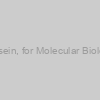 Casein, for Molecular Biology |
|
MB279-500G |
EWC Diagnostics |
1 unit |
EUR 387.65 |
|
Description: Casein, for Molecular Biology |
 2-Mercaptoethanol ?For Molecular Biology |
|
MB041-100ML |
EWC Diagnostics |
1 unit |
EUR 9.02 |
|
Description: 2-Mercaptoethanol ?For Molecular Biology |
 2-Mercaptoethanol ?For Molecular Biology |
|
MB041-500ML |
EWC Diagnostics |
1 unit |
EUR 26.47 |
|
Description: 2-Mercaptoethanol ?For Molecular Biology |
 Molecular Biology Grade Water for RT-PCR |
|
ML065-1.5ML |
EWC Diagnostics |
1 unit |
EUR 7.82 |
|
Description: Molecular Biology Grade Water for RT-PCR |
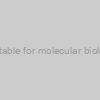 Pyridine, GlenBiol™, suitable for molecular biology with molecular sieve |
|
GS8780-2500 |
Glentham Life Sciences |
2500 |
EUR 249.8 |
|
|
) DTT (Molecular Biology Grade) |
|
CE131 |
GeneOn |
5 g |
EUR 93.6 |
) DTT (Molecular Biology Grade) |
|
CE132 |
GeneOn |
10 g |
EUR 133.2 |
) DTT (Molecular Biology Grade) |
|
CE133 |
GeneOn |
25 g |
EUR 243.6 |
) NAD (Molecular Biology Grade) |
|
CE196 |
GeneOn |
1 g |
EUR 72 |
) NAD (Molecular Biology Grade) |
|
CE197 |
GeneOn |
5 g |
EUR 165.6 |
) NBT (Molecular Biology Grade) |
|
CE209 |
GeneOn |
1 g |
EUR 123.6 |
) NBT (Molecular Biology Grade) |
|
CE210 |
GeneOn |
5 g |
EUR 360 |
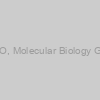 DMSO, Molecular Biology Grade |
|
40470006-1 |
Glycomatrix |
100 mL |
EUR 88.18 |
 DMSO, Molecular Biology Grade |
|
40470006-2 |
Glycomatrix |
250 mL |
EUR 150.19 |
 DMSO, Molecular Biology Grade |
|
40470006-3 |
Glycomatrix |
500 mL |
EUR 279.26 |
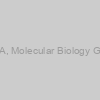 EGTA, Molecular Biology Grade |
|
40500028-2 |
Glycomatrix |
50 g |
EUR 106.43 |
 EGTA, Molecular Biology Grade |
|
40500028-3 |
Glycomatrix |
100 g |
EUR 177.58 |
 EGTA, Molecular Biology Grade |
|
40500028-4 |
Glycomatrix |
500 g |
EUR 603.19 |
 EGTA, Molecular Biology Grade |
|
40500028-5 |
Glycomatrix |
1 kg |
EUR 912.98 |
 EGTA, Molecular Biology Grade |
|
40500028-6 |
Glycomatrix |
2 kg |
EUR 1687.94 |
) BCIP (Molecular Biology Grade) |
|
CE108 |
GeneOn |
250 mg |
EUR 75.6 |
) BCIP (Molecular Biology Grade) |
|
CE109 |
GeneOn |
1 g |
EUR 108 |
) DAPI (Molecular Biology Grade) |
|
CE117 |
GeneOn |
5 mg |
EUR 72 |
) DAPI (Molecular Biology Grade) |
|
CE118 |
GeneOn |
25 mg |
EUR 159.6 |
) DAPI (Molecular Biology Grade) |
|
CE119 |
GeneOn |
100 mg |
EUR 382.8 |
) Tris (Molecular Biology Grade) |
|
CE237 |
GeneOn |
500 g |
EUR 106.8 |
) Tris (Molecular Biology Grade) |
|
CE238 |
GeneOn |
1 kg |
EUR 153.6 |
) Tris (Molecular Biology Grade) |
|
CE239 |
GeneOn |
5 kg |
EUR 535.2 |
) CHAPS (Molecular Biology Grade) |
|
CE114 |
GeneOn |
1 g |
EUR 66 |
) CHAPS (Molecular Biology Grade) |
|
CE115 |
GeneOn |
5 g |
EUR 157.2 |
) CHAPS (Molecular Biology Grade) |
|
CE116 |
GeneOn |
25 g |
EUR 492 |
) HEPES (Molecular Biology Grade) |
|
CE171 |
GeneOn |
100 g |
EUR 98.4 |
) HEPES (Molecular Biology Grade) |
|
CE172 |
GeneOn |
500 g |
EUR 268.8 |
) HEPES (Molecular Biology Grade) |
|
CE173 |
GeneOn |
1 kg |
EUR 424.8 |
) Water (Molecular Biology Grade) |
|
CE243 |
GeneOn |
500 ml |
EUR 62.4 |
) Water (Molecular Biology Grade) |
|
CE244 |
GeneOn |
1 l |
EUR 67.2 |
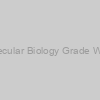 Molecular Biology Grade Water |
|
ML024-100ML |
EWC Diagnostics |
1 unit |
EUR 3.54 |
|
Description: Molecular Biology Grade Water |
 Molecular Biology Grade Water |
|
ML024-10X100ML |
EWC Diagnostics |
1 unit |
EUR 29.52 |
|
Description: Molecular Biology Grade Water |
 Molecular Biology Grade Water |
|
ML024-10X500ML |
EWC Diagnostics |
1 unit |
EUR 87.91 |
|
Description: Molecular Biology Grade Water |
 Molecular Biology Grade Water |
|
ML024-500ML |
EWC Diagnostics |
1 unit |
EUR 12.56 |
|
Description: Molecular Biology Grade Water |
 Molecular Biology Grade Water |
|
ML064-100ML |
EWC Diagnostics |
1 unit |
EUR 3.67 |
|
Description: Molecular Biology Grade Water |
 Molecular Biology Grade Water |
|
ML064-10X100ML |
EWC Diagnostics |
1 unit |
EUR 25.38 |
|
Description: Molecular Biology Grade Water |
 Molecular Biology Grade Water |
|
ML064-500ML |
EWC Diagnostics |
1 unit |
EUR 10.81 |
|
Description: Molecular Biology Grade Water |
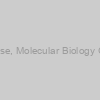 Agarose, Molecular Biology Grade |
|
40100164-1 |
Bio-WORLD |
25 g |
Ask for price |
|
|
 Agarose, Molecular Biology Grade |
|
40100164-2 |
Bio-WORLD |
50 g |
Ask for price |
|
|
 Agarose, Molecular Biology Grade |
|
40100164-3 |
Bio-WORLD |
100 g |
Ask for price |
|
|
 Agarose, Molecular Biology Grade |
|
40100164-4 |
Bio-WORLD |
500 g |
Ask for price |
|
|
 Agarose, Molecular Biology Grade |
|
40100164-5 |
Bio-WORLD |
1 kg |
Ask for price |
|
|
) Glycine (Molecular Biology Grade) |
|
CE158 |
GeneOn |
1 kg |
EUR 84 |
) Glycine (Molecular Biology Grade) |
|
CE159 |
GeneOn |
5 kg |
EUR 228 |
) Tween20 (Molecular Biology Grade) |
|
CE242 |
GeneOn |
1 l |
EUR 106.8 |
) Agarose (Molecular Biology Grade) |
|
abx299715-100g |
Abbexa |
100 µg |
Ask for price |
) Agarose (Molecular Biology Grade) |
|
abx299715-20g |
Abbexa |
20 µg |
EUR 525 |
) Agarose (Molecular Biology Grade) |
|
abx299715-50g |
Abbexa |
50 µg |
Ask for price |
) Lysozyme (Molecular Biology Grade) |
|
CE188 |
GeneOn |
1 g |
EUR 70.8 |
) Lysozyme (Molecular Biology Grade) |
|
CE189 |
GeneOn |
10 g |
EUR 247.2 |
) Lysozyme (Molecular Biology Grade) |
|
CE189L |
GeneOn |
50 g |
EUR 310 |
) Lysozyme (Molecular Biology Grade) |
|
CE189XL |
GeneOn |
250 g |
EUR 1050 |
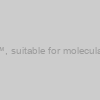 Dimethylformamide, GlenBiol™, suitable for molecular biology with molecular sieve |
|
GS3406-2500 |
Glentham Life Sciences |
2500 |
EUR 116.2 |
|
|
 "10X PBS, Molecular Biology Grade" |
|
ML023-100ML |
EWC Diagnostics |
1 unit |
EUR 17.65 |
|
Description: "10X PBS, Molecular Biology Grade" |
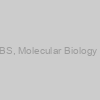 10X PBS, Molecular Biology Grade |
|
ML023-500ML |
EWC Diagnostics |
1 unit |
EUR 38.97 |
|
Description: 10X PBS, Molecular Biology Grade |
 "10X TBS, Molecular Biology Grade" |
|
ML029-100ML |
EWC Diagnostics |
1 unit |
EUR 19.04 |
|
Description: "10X TBS, Molecular Biology Grade" |
 "10X TBS, Molecular Biology Grade" |
|
ML029-500ML |
EWC Diagnostics |
1 unit |
EUR 40.48 |
|
Description: "10X TBS, Molecular Biology Grade" |
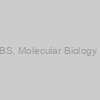 10X TBS, Molecular Biology Grade |
|
ML029-6X500ML |
EWC Diagnostics |
1 unit |
EUR 138.56 |
|
Description: 10X TBS, Molecular Biology Grade |
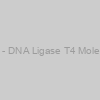 OORA00218-100IU - DNA Ligase T4 Molecular Biology Grade |
|
OORA00218-100IU |
Aviva Systems Biology |
100Units |
EUR 129 |
|
|
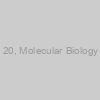 Tween 20, Molecular Biology Grade |
|
T9100-010 |
GenDepot |
100ml |
EUR 86.4 |
 Tween 20, Molecular Biology Grade |
|
T9100-050 |
GenDepot |
500ml |
EUR 133.2 |
 Tween 20, Molecular Biology Grade |
|
T9100-100 |
GenDepot |
1L |
EUR 160.8 |
 Dimethylformamide, GlenBiol™, suitable for molecular biology |
|
GS6580-2500 |
Glentham Life Sciences |
2500 |
EUR 107.3 |
|
|
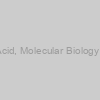 Boric Acid, Molecular Biology Grade |
|
40200060-1 |
Glycomatrix |
500 g |
EUR 46.16 |
 Boric Acid, Molecular Biology Grade |
|
40200060-2 |
Glycomatrix |
1 kg |
EUR 76.66 |
 Boric Acid, Molecular Biology Grade |
|
40200060-3 |
Glycomatrix |
2.5 kg |
EUR 145.5 |
-Sucrose (Molecular Biology Grade)) D(+)-Sucrose (Molecular Biology Grade) |
|
CE224 |
GeneOn |
500 g |
EUR 67.2 |
-Sucrose (Molecular Biology Grade)) D(+)-Sucrose (Molecular Biology Grade) |
|
CE225 |
GeneOn |
1 kg |
EUR 84 |
-Sucrose (Molecular Biology Grade)) D(+)-Sucrose (Molecular Biology Grade) |
|
CE226 |
GeneOn |
5 kg |
EUR 207.6 |
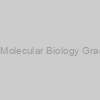 20xSSC, Molecular Biology Grade, pH7.0 |
|
TBS5033-1L |
Tribioscience |
1L |
EUR 67 |
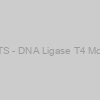 OORA00218-100UNITS - DNA Ligase T4 Molecular Biology Grade |
|
OORA00218-100UNITS |
Aviva Systems Biology |
100Units |
EUR 149 |
|
|
) Formamide deionized (Molecular Biology Grade) |
|
CE145 |
GeneOn |
500 ml |
EUR 87.6 |
) Formamide deionized (Molecular Biology Grade) |
|
CE146 |
GeneOn |
1 l |
EUR 120 |
) RNase/DNase free water, for molecular biology (10 x 1.5ml) |
|
Z-RNase/DNase-free-water |
Novacyt Group |
n/a |
EUR 62 |
) Glycerol 87 % (Molecular Biology Grade) |
|
CE154 |
GeneOn |
1 l |
EUR 93.6 |
) MOPS buffer (Molecular Biology Grade) |
|
CE194 |
GeneOn |
100 g |
EUR 102 |
) MOPS buffer (Molecular Biology Grade) |
|
CE195 |
GeneOn |
250 g |
EUR 169.2 |
 Agarose, Molecular Biology Grade, 100g |
|
PC0701-100g |
Vivantis |
each |
Ask for price |
 Agarose, Molecular Biology Grade, 1kg |
|
PC0701-1kg |
Vivantis |
each |
Ask for price |
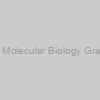 Agarose, Molecular Biology Grade, 500g |
|
PC0701-500g |
Vivantis |
each |
Ask for price |
) Dimethylsulfoxide (Molecular Biology Grade) |
|
CE120 |
GeneOn |
100 ml |
EUR 66 |
) Dimethylsulfoxide (Molecular Biology Grade) |
|
CE121 |
GeneOn |
500 ml |
EUR 110.4 |
) TritonX-100 (Molecular Biology Grade) |
|
CE240 |
GeneOn |
500 ml |
EUR 67.2 |
) TritonX-100 (Molecular Biology Grade) |
|
CE241 |
GeneOn |
1 l |
EUR 79.2 |
) OORA00219-v1 - DNA Ligase T4 Molecular Biology Grade (500units) |
|
OORA00219-v1 |
Aviva Systems Biology |
500units |
EUR 375 |
|
|
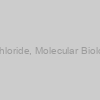 Cesium Chloride, Molecular Biology Grade |
|
40300060-1 |
Glycomatrix |
50 g |
EUR 45.77 |
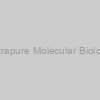 Water, Ultrapure Molecular Biology Grade |
|
41024-4L |
Biotium |
4L |
EUR 79 |
|
|
|
Description: N/A |
 Water, Ultrapure Molecular Biology Grade |
|
41024-4L-1 |
Biotium |
EA |
EUR 79 |
) Bis-Acrylamid (Molecular Biology Grade) |
|
CE110 |
GeneOn |
50 g |
EUR 94.8 |
) Bis-Acrylamid (Molecular Biology Grade) |
|
CE111 |
GeneOn |
250 g |
EUR 259.2 |
) Sodium chloride (Molecular Biology Grade) |
|
CE205 |
GeneOn |
500 g |
EUR 62.4 |
) Sodium chloride (Molecular Biology Grade) |
|
CE206 |
GeneOn |
1 kg |
EUR 70.8 |
) Sodium chloride (Molecular Biology Grade) |
|
CE207 |
GeneOn |
5 kg |
EUR 123.6 |
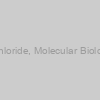 Lithium Chloride, Molecular Biology Grade |
|
41200036-1 |
Glycomatrix |
100 g |
EUR 41.7 |
 Lithium Chloride, Molecular Biology Grade |
|
41200036-2 |
Glycomatrix |
500 g |
EUR 108.38 |
) Ammonium sulfate (Molecular Biology Grade) |
|
CE105 |
GeneOn |
250 g |
EUR 55.2 |
) Ammonium sulfate (Molecular Biology Grade) |
|
CE106 |
GeneOn |
1 kg |
EUR 72 |
) Ammonium sulfate (Molecular Biology Grade) |
|
CE107 |
GeneOn |
5 kg |
EUR 153.6 |
 (Molecular Biology Grade)) SSC Buffer (20X) (Molecular Biology Grade) |
|
CE229 |
GeneOn |
1 l |
EUR 86.4 |
) Glycerol waterfree (Molecular Biology Grade) |
|
CE155 |
GeneOn |
500 ml |
EUR 78 |
) Glycerol waterfree (Molecular Biology Grade) |
|
CE156 |
GeneOn |
1 l |
EUR 102 |
) Glycerol waterfree (Molecular Biology Grade) |
|
CE157 |
GeneOn |
2.5 l |
EUR 170.4 |
) Tris - Hydrochloride (Molecular Biology Grade) |
|
CE234 |
GeneOn |
250 g |
EUR 99.6 |
) Tris - Hydrochloride (Molecular Biology Grade) |
|
CE235 |
GeneOn |
500 g |
EUR 144 |
) Tris - Hydrochloride (Molecular Biology Grade) |
|
CE236 |
GeneOn |
1 kg |
EUR 223.2 |
) XTT sodium salt (Molecular Biology Grade) |
|
CE250 |
GeneOn |
100 mg |
EUR 208.8 |
) XTT sodium salt (Molecular Biology Grade) |
|
CE251 |
GeneOn |
500 mg |
EUR 612 |
) OORA00219-500UNITS - DNA Ligase T4 Molecular Biology Grade (500units) |
|
OORA00219-500UNITS |
Aviva Systems Biology |
500Units |
EUR 329 |
|
|
) NADP - sodium salt (Molecular Biology Grade) |
|
CE200 |
GeneOn |
250 mg |
EUR 92.4 |
) NADP - sodium salt (Molecular Biology Grade) |
|
CE201 |
GeneOn |
1 g |
EUR 190.8 |
) Guanidine Thiocyanate (Molecular Biology Grade) |
|
CE164 |
GeneOn |
100 g |
EUR 86.4 |
) Guanidine Thiocyanate (Molecular Biology Grade) |
|
CE165 |
GeneOn |
500 g |
EUR 192 |
) Guanidine Thiocyanate (Molecular Biology Grade) |
|
CE166 |
GeneOn |
1 kg |
EUR 307.2 |
) NADH - Disodium salt (Molecular Biology Grade) |
|
CE198 |
GeneOn |
1 g |
EUR 91.2 |
) NADH - Disodium salt (Molecular Biology Grade) |
|
CE199 |
GeneOn |
5 g |
EUR 244.8 |
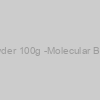 Agarose Powder 100g -Molecular Biology Grade |
|
MB755-0100 |
Bio-Helix |
100 g |
EUR 46 |
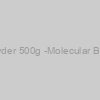 Agarose Powder 500g -Molecular Biology Grade |
|
MB755-0500 |
Bio-Helix |
500 g |
EUR 184 |
) Guanidine - Hydrochloride (Molecular Biology Grade) |
|
CE160 |
GeneOn |
100 g |
EUR 93.6 |
) Guanidine - Hydrochloride (Molecular Biology Grade) |
|
CE161 |
GeneOn |
250 g |
EUR 153.6 |
) Guanidine - Hydrochloride (Molecular Biology Grade) |
|
CE162 |
GeneOn |
500 g |
EUR 232.8 |
) Guanidine - Hydrochloride (Molecular Biology Grade) |
|
CE163 |
GeneOn |
1 kg |
EUR 352.8 |
-Glucose waterfree (Molecular Biology Grade)) D(+)-Glucose waterfree (Molecular Biology Grade) |
|
CE148 |
GeneOn |
500 g |
EUR 67.2 |
-Glucose waterfree (Molecular Biology Grade)) D(+)-Glucose waterfree (Molecular Biology Grade) |
|
CE149 |
GeneOn |
1 kg |
EUR 75.6 |
-Glucose waterfree (Molecular Biology Grade)) D(+)-Glucose waterfree (Molecular Biology Grade) |
|
CE150 |
GeneOn |
5 kg |
EUR 180 |
In whole, 14 species of the households Diplostomidae, Echinostomatidae, Notocotylidae, Plagiorchiidae, and Strigeidae occurred in R. auricularia, wherease S. libertina harbored 10 species of the households Echinochasmidae, Heterophyidae, Notocotylidae, and Lecithodendridae and Cercaria creta, an unclassified species whose grownup stage remains to be unknown. The species range of the larval trematodes may very well be acknowledged as a “scorching spot”, suggesting that the seasonal go to of waterfowls is essential to unfold trematodes and to maintain their range. It appears seemingly that every of the parasite populations is at all times disturbed by repeated visits of waterfowls.

